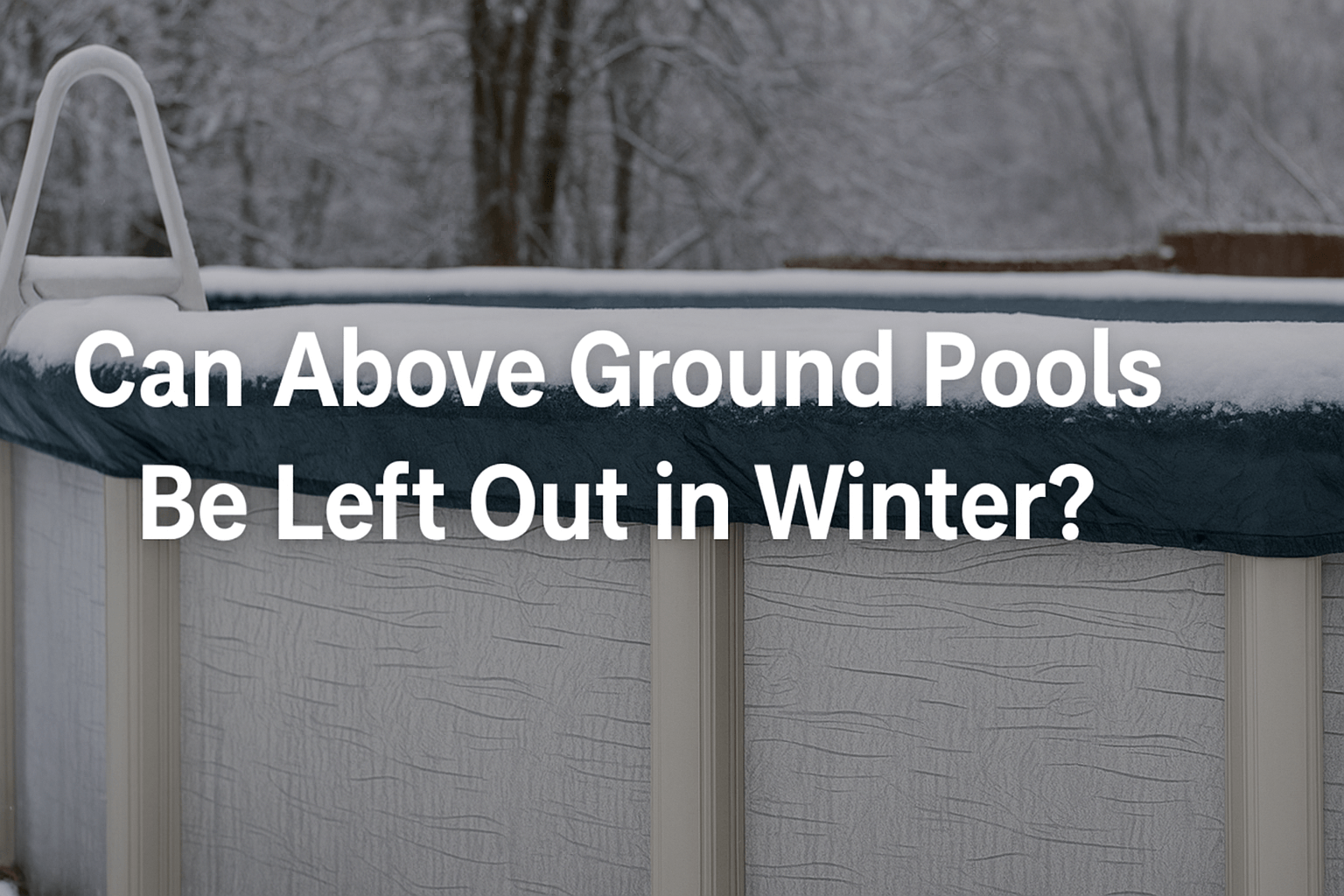
Can Above Ground Pools Be Left Out In The Winter?
Can you leave your above ground pool out in winter? Short answer: yes—but only if you prepare it properly.
Whether you’ve got a large family pool or a portable small swimming pool, leaving it exposed without protection can lead to serious damage. But with the right prep, it can sit safely through snow, storms, and surprise frosts.
Let’s walk through why keeping your pool up can be a smart move, what can go wrong if you don’t winterise it, and the exact steps to get it ready for hibernation.
Why Leaving Your Pool Up is Recommended
Taking your pool down might seem like the “sensible” winter thing to do—but it can cause more hassle than it’s worth.
Avoiding Wear and Tear from Disassembly
Every time you dismantle and rebuild your pool, you’re adding stress to the frame, liner, and fittings. It’s a bit like repeatedly folding and unfolding a cardboard box—eventually, the creases split.
Not to mention, disassembly is a proper weekend job. If you've got little ones running around or a packed family calendar, it's often the last thing you want to deal with when the cold sets in.
Preventing Soil Erosion and Shifting Ground
Ever notice how rain and frost can completely change the shape of your garden bed? The same happens under your pool.
Taking it down can expose the base to erosion, frost heave, or waterlogging. By keeping your pool in place—especially smaller, portable ones—you help protect that space from shifting and make next year’s setup far easier.

The Risks of Not Winterizing Your Pool
Now here’s the catch: leaving your pool out is only a good idea if you winterise it properly.
The Threat of Freezing Temperatures on the Frame and Liner
Water expands when it freezes—and your pool is not a fan of that.
When left untreated, ice can press hard against the liner or push apart frame joints. You could wake up to a cracked liner, warped walls, or a broken pump. And let’s be honest—no one wants to start spring with a repair bill.
What Happens to the Water If Left Untreated?
Unbalanced water quickly turns into a swamp.
Come April, you’ll lift the cover and find cloudy water, green slime, and an awful smell. Cleaning that up isn’t just unpleasant—it’s costly. More chemicals, more time, more stress. Winterising now saves you a big job later.

The Essential Steps for Winterizing Your Pool
Done right, winterisation keeps your pool safe, stable, and ready for that first warm weekend of spring.
When to Start the Winterization Process
Timing is everything. Do it too early, and you waste money. Leave it too late, and frost creeps in.
The Ideal Water Temperature for Closing
Aim to start once the water drops below 15°C. At that point, algae struggles to grow, and it’s still warm enough to work comfortably.
This sweet spot usually falls in late autumn—though it depends where you live in the UK.
The Importance of Proper Timing
Try not to guess. Keep an eye on your local weather forecast.
If the temperature dips unexpectedly, you don’t want to be rushing to cover the pool while it’s already freezing outside. Plan ahead and pick a calm, dry weekend to get everything done.

Key Winterization Tasks
If you’re tackling this yourself, here’s the checklist every pool owner should follow.
Balancing Chemicals and Shocking the Water
First things first—test your water.
You’re aiming for a pH between 7.2 and 7.6, with properly balanced alkalinity and calcium hardness. Once it’s in range, add a winter chemical kit and give the water one last shock treatment.
Think of it as tucking your pool in with a warm blanket and a flu jab—it helps keep problems away while it rests.
Draining and Protecting Plumbing and Equipment
Freezing water and pipes don’t mix. If you’ve got pumps, filters or hoses, drain them fully and store them somewhere frost-free if possible.
If they must stay outside, use winterising plugs and follow your pool brand’s winter instructions. Don’t forget to remove ladders, skimmer nets, and anything else that’s not meant to face the winter weather.
Covering the Pool Securely
Now the final (and very satisfying) step: the winter cover.
Choose one that fits properly—solid or mesh, depending on your budget and setup. Install it tightly and make sure it won’t sag or blow away. A sagging cover can collapse under heavy snow or let in debris, undoing all your hard work.
Once covered, give it a quick check every couple of weeks. It only takes a few minutes and could save you hours in the spring.
Note: Always follow your specific pool manufacturer’s winterization guidelines in addition to the steps above. Different pool types and materials may require special care, and the manufacturer’s instructions will ensure you’re protecting your warranty while keeping your pool in the best condition possible.
Have you checked out our other posts?
Can Above Ground Pools Be Repaired?
Can Above Ground Pools Be Recycled?
How Do Above Ground Pools Work?



Leave a comment